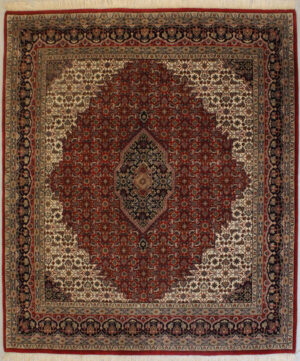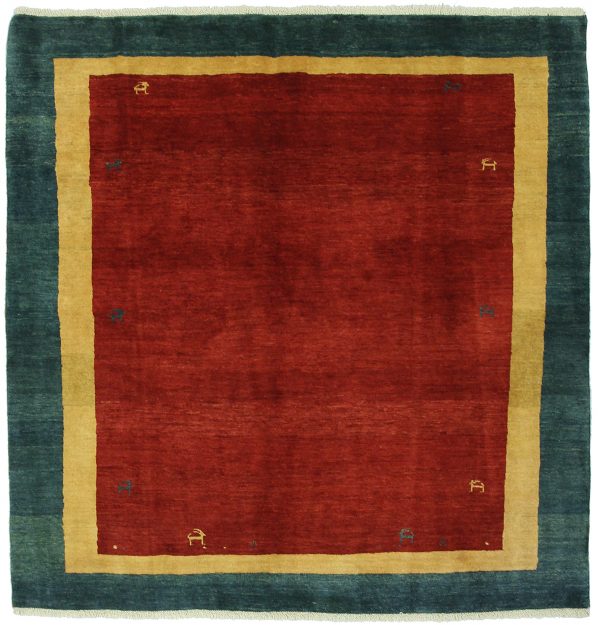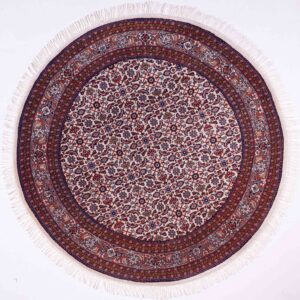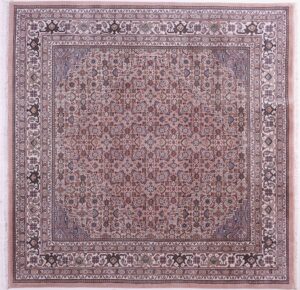Origin Type
Heriz weaving area is approximately 60 km east of Tabriz. There are villages who produce similar design rugs around Heriz but with different qualities. The best quality are known as Heriz and the inferior but with similar design are Meriban, and Gorevan(a cheap and rather coarse variation of the Heriz). The designs woven in this area is composed of a large geometric medallion with stylized palmette leaves in the field. The borders are similar to Tabriz Mahi rugs and Bijars which have the typical Herati border pattern. In the beginning of the 20th century there was a particular Heriz type of rug named Serapi. They were much finer in weave and wool quality and because of this there values have risen extraordinary in the last 20 years. They have been sought after by collectors and designers because of the beautiful subtle vegetable dyes incorporated in these splendid usually large rugs. Serapi denotes a type of Heriz rather than an actual workshop or village.
Today Bakhshayesh, a village in the Heriz area stands out by creating contemporary magnificent vegetable dye rugs similar to those created by the Serapi weavers. These are becoming rarer even today because of the limited number of pieces that are woven. They will definitely become as collectible as are the Serapi’s!
Both Heriz rugs and Bakhshayesh rugs are usually thick, large knotted and will withstand wear and tear quite well. Although these rugs have similar designs, it is amazing that no two pieces are quite the same!. Heriz designs utilize either soft or strong tones of pink, khaki, ivory, and light and dark blue.
Although Bakhshayesh rugs utilize similar designs to Heriz rugs however, the Bakhshayesh rug field is usually sparsely filled and because they utilize vegetable dyes Bakhshayesh rugs are more vibrant in there color scheme. In Europe these rugs are often used under dining tables or large halls. Today very few Heriz and Bakhshayeshes are available in the market due to the limited production and most Herizes that can be found are usually 20-40 yeras old! They are usually woven in large sizes from 2mx3m to 4mx6m.






Reviews
There are no reviews yet.